Systemair Bundle
Who Really Owns Systemair?
Understanding a company's ownership structure is crucial for investors and stakeholders alike. The evolution of ownership often dictates a company's strategic direction and long-term success. Considering the global presence and market position of Systemair, a deep dive into its ownership details reveals valuable insights. This analysis will explore the Systemair SWOT Analysis, examining how the company's ownership has influenced its trajectory.
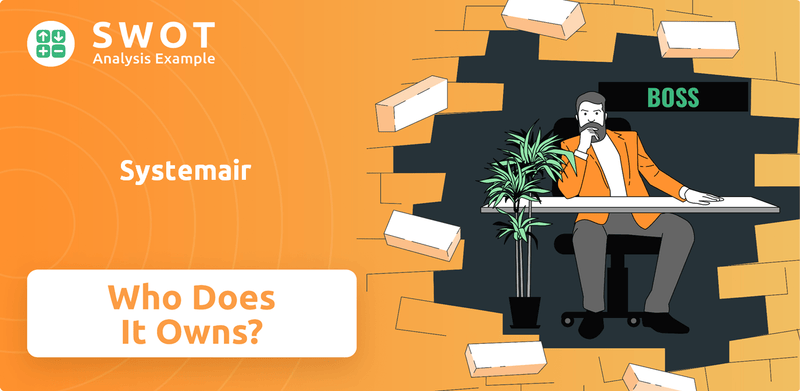
From its humble beginnings in Sweden to its current status as a global leader, the Systemair company has undergone significant changes. Knowing who owns Systemair provides a comprehensive understanding of its operations. This exploration of Systemair ownership will cover the Systemair history, key shareholders, and the impact of ownership on the company's strategic decisions, including its financial performance and future prospects. The Systemair company profile will be revealed.
Who Founded Systemair?
The company, now known as Systemair, was established in 1974. It was founded by Gerald Engström, initially operating under the name LHG Kanalfläkt. This marked the beginning of what would become a significant player in the ventilation industry.
Gerald Engström took over as CEO in 1986. His leadership was crucial in shaping the company's early direction and growth. The initial focus was on providing ventilation solutions, a market where the company quickly established a presence.
Early partnerships played a vital role in Systemair's development. Key suppliers, such as Ziehl-Abegg and ebmpapst, later became strategic partners. This collaboration provided the company with access to essential resources and expertise.
Gerald Engström founded Systemair in 1974, initially as LHG Kanalfläkt. He later became CEO in 1986, guiding the company's early years.
Ziehl-Abegg and ebmpapst were crucial suppliers. They later became partners through their Swedish subsidiary, Ziehl-ebm (now ebmpapst AB).
ebmpapst AB became the second-largest shareholder. This highlights the importance of early strategic alliances in the company's ownership.
Gerald Engström remained deeply involved, transitioning to Chairman of the Board in 2015. This ensured continuity in leadership.
Engström's continuous leadership from inception shaped the company's direction. This was crucial for the company's early development and strategic focus.
Specific details on the initial equity split or early angel investors are not readily available. The involvement of ebmpapst AB is a key factor.
The early ownership of the Systemair company was significantly influenced by its strategic partnerships. While the exact initial equity distribution is not fully detailed, the involvement of ebmpapst AB as a major shareholder from the early stages highlights a crucial aspect of the company's structure. Gerald Engström's transition from CEO to Chairman of the Board in 2015 underscores his enduring influence and the continuity of his vision. The Systemair owner, Gerald Engström, ensured a strong initial control. For more insights, consider reading about the history of the company in this article, which provides additional context on the Systemair history.
The early years of Systemair were marked by strategic partnerships and strong leadership.
- Gerald Engström founded the company and remained a key figure.
- Partnerships with suppliers like ebmpapst AB were crucial.
- Engström's continuous leadership ensured a consistent vision.
- The company's structure was shaped by these early decisions.
Systemair SWOT Analysis
- Complete SWOT Breakdown
- Fully Customizable
- Editable in Excel & Word
- Professional Formatting
- Investor-Ready Format
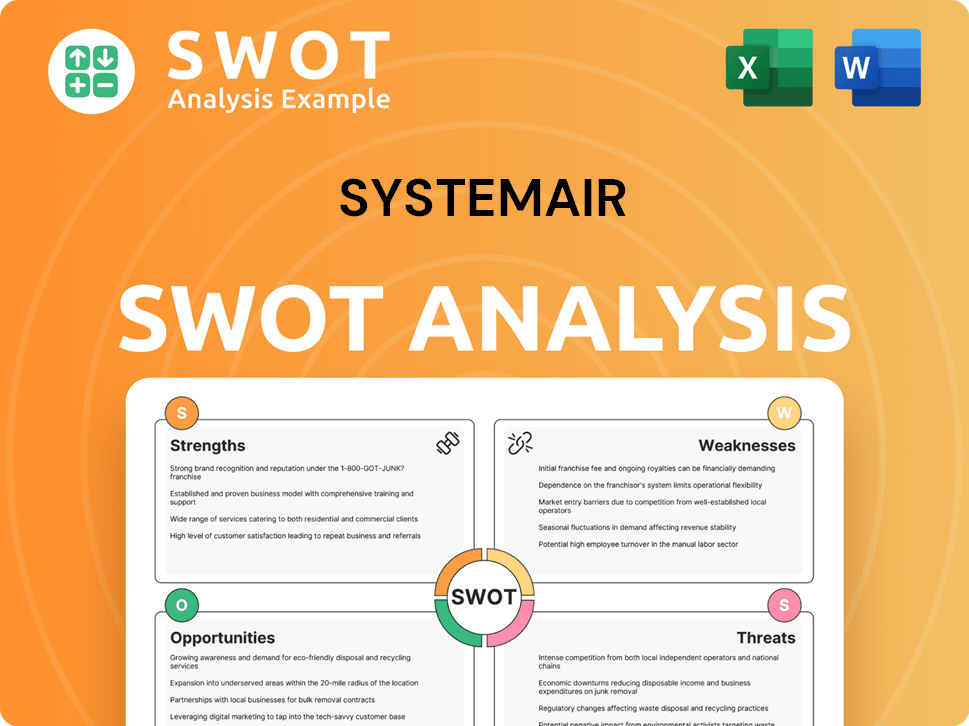
How Has Systemair’s Ownership Changed Over Time?
The evolution of Systemair ownership has been marked by strategic shifts since its inception. The company, listed on the Nasdaq OMX Nordic Exchange in Stockholm since October 2007, operates on the Large Cap List. As of June 13, 2025, the market capitalization reached $1.87 billion, with approximately 208 million shares outstanding.
The current ownership structure reveals a diverse group of stakeholders. Individual insiders hold a substantial 43% of the shares, totaling about 89.5 million shares. Institutional investors account for 46.4%, equivalent to roughly 96.5 million shares, while private companies own 10.7%, or around 22.2 million shares. Key institutional investors include The Vanguard Group, Inc. and Assenagon Asset Management S.A. Founder Gerald Engström, through Färna Invest AB, remains a significant individual shareholder.
| Ownership Category | Percentage of Shares | Approximate Shares Held |
|---|---|---|
| Individual Insiders | 43% | 89.5 million |
| Institutions | 46.4% | 96.5 million |
| Private Companies | 10.7% | 22.2 million |
Several key events have influenced the ownership landscape. In March 2023, a significant change occurred when Panasonic acquired Systemair's commercial air-conditioning businesses, including Systemair AC SAS, Systemair S.r.l., and Tecnair S.p.A. More recently, in January 2025, Systemair increased its stake in its Turkish subsidiary, Systemair HSK Türkiye, to 100%, consolidating its presence in a key market. For more insights into the company's strategic direction, consider reading about the Growth Strategy of Systemair.
Understanding Systemair's ownership structure is crucial for investors and stakeholders. The company's shares are traded on the Nasdaq OMX Nordic Exchange, providing transparency into its ownership. Key shareholders include individual insiders, institutional investors, and private companies.
- Individual insiders hold a substantial portion of the shares.
- Institutional investors play a significant role in the company's ownership.
- Strategic acquisitions and divestitures have shaped the ownership landscape.
- The founder remains a key shareholder.
Systemair PESTLE Analysis
- Covers All 6 PESTLE Categories
- No Research Needed – Save Hours of Work
- Built by Experts, Trusted by Consultants
- Instant Download, Ready to Use
- 100% Editable, Fully Customizable
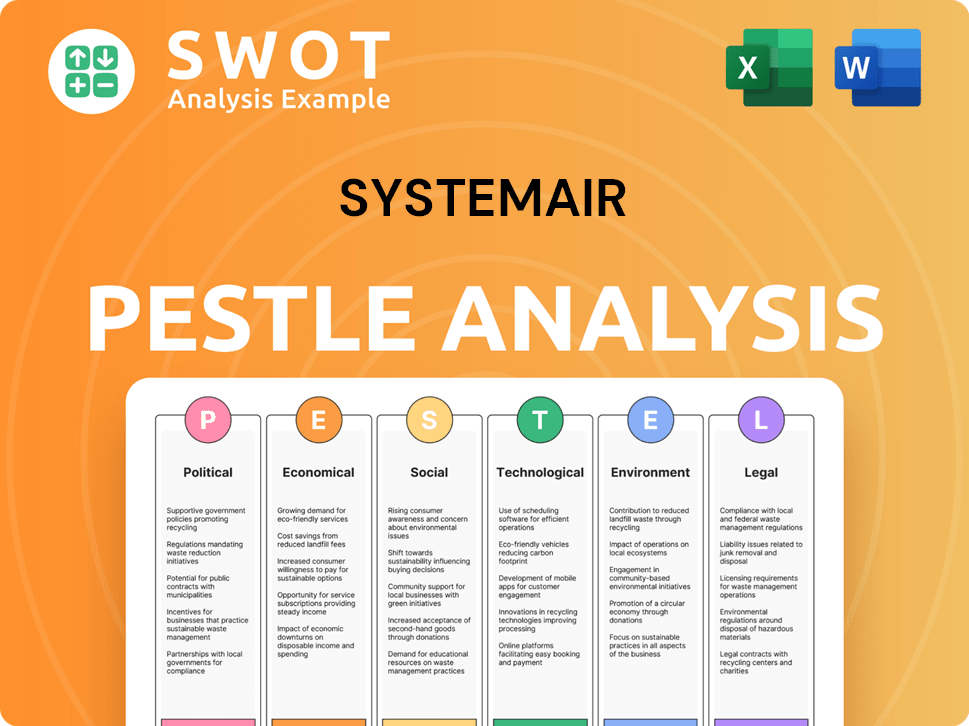
Who Sits on Systemair’s Board?
The current board of directors of the Systemair company plays a significant role in its governance. As of June 2025, the Nomination Committee proposed the re-election of Gerald Engström, Patrik Nolåker, Gunilla Spongh, and Niklas Engström. The committee also proposed the election of Peter Fenkl and Åsa Söderström Winberg, increasing the total number of board members to six. Carina Andersson declined re-election. This structure reflects a blend of shareholder representation and independent oversight, crucial for the company's strategic direction.
Gerald Engström, the founder and the largest shareholder through Färna Invest AB, has been the Chairman of the Board since 2015 and is proposed to become Vice Chairman. Patrik Nolåker is proposed as the new Chairman. Other board members include Gunilla Spongh and Niklas Engström. The board also includes employee representatives, such as Daniel Wilhelmsson and Ricky Sten. This composition indicates a balance between major shareholder influence and independent perspectives, ensuring comprehensive oversight of the Competitors Landscape of Systemair.
| Board Member | Role | Shareholder Affiliation |
|---|---|---|
| Patrik Nolåker | Chairman (Proposed) | Independent |
| Gerald Engström | Vice Chairman (Proposed) | Färna Invest AB (Major Shareholder) |
| Gunilla Spongh | Board Member | Independent |
| Niklas Engström | Board Member | Independent |
| Peter Fenkl | Board Member (Proposed) | Independent |
| Åsa Söderström Winberg | Board Member (Proposed) | Independent |
Systemair's voting structure typically follows a one-share-one-vote system. The influence of major shareholders, such as Gerald Engström, is evident through his continued presence on the board and his position as the largest shareholder. The Nomination Committee, which proposes board members, includes representatives from Alecta, Färna Invest AB, and Swedbank Robur Fonder, reflecting the influence of significant shareholder groups in shaping the board's composition. There have been no recent reports of proxy battles or activist investor campaigns.
The Systemair company's ownership is significantly influenced by its founder, Gerald Engström, through Färna Invest AB. The board of directors includes a mix of independent members and representatives of major shareholders. The Nomination Committee includes representatives from key shareholders, shaping the board's composition.
- Gerald Engström is the largest shareholder.
- The board includes independent directors.
- The Nomination Committee reflects major shareholder influence.
- One-share-one-vote voting structure.
Systemair Business Model Canvas
- Complete 9-Block Business Model Canvas
- Effortlessly Communicate Your Business Strategy
- Investor-Ready BMC Format
- 100% Editable and Customizable
- Clear and Structured Layout
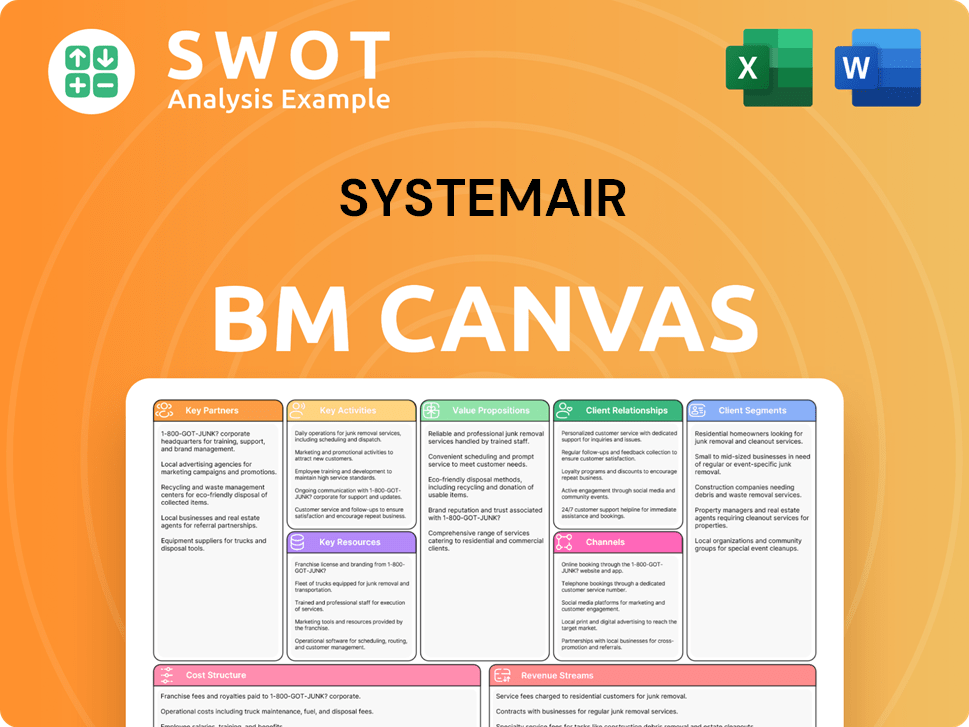
What Recent Changes Have Shaped Systemair’s Ownership Landscape?
Over the past few years, the ownership structure of the Systemair company has seen several significant shifts. A key development was the departure of Roland Kasper as President and CEO in April 2025 after a decade in the role, with a search underway for a new CEO. This change in leadership is a crucial factor in understanding the current trajectory of Systemair.
In terms of acquisitions and divestitures, Systemair acquired PHEM Engineering SDN BHD in May 2024, expanding its ventilation product manufacturing capabilities. A strategic move was the full acquisition of Systemair HSK Türkiye in January 2025, consolidating its presence in the Turkish market. Conversely, in March 2023, Panasonic acquired Systemair's commercial air-conditioning businesses. These moves highlight Systemair's active management of its portfolio and strategic focus.
| Development | Date | Details |
|---|---|---|
| CEO Transition | April 2025 | Departure of Roland Kasper; recruitment of a new CEO initiated. |
| Acquisition | May 2024 | Acquisition of PHEM Engineering SDN BHD. |
| Acquisition | January 2025 | Full acquisition of Systemair HSK Türkiye. |
| Divestiture | March 2023 | Sale of commercial air-conditioning businesses to Panasonic. |
| Share Repurchase | April 2025 | Board resolved to repurchase up to 320,000 shares. |
In April 2025, Systemair's board authorized a share repurchase program, intending to buy back up to 320,000 shares on Nasdaq Stockholm. This action, authorized by the annual general meeting on August 29, 2024, aligns with the company's share-based incentive programs. At the time of the announcement, the company held no treasury shares, with a total of 208,000,000 shares outstanding. These financial maneuvers reflect Systemair's commitment to managing its capital structure and shareholder value.
The focus on indoor air quality, energy efficiency, and decarbonization is increasing. New building codes and energy requirements drive these trends, influencing how companies operate and invest. Systemair is responding to these shifts by earning Passivhaus certifications.
Systemair's acquisitions and divestitures indicate a proactive approach to market changes and strategic goals. The full acquisition of the Turkish subsidiary and the sale of the air-conditioning business are examples of this. These decisions shape the company's future.
The share repurchase program demonstrates Systemair's commitment to shareholder value. The buyback of up to 320,000 shares signals confidence in the company's financial health. This action is linked to the company's incentive programs.
As Systemair adapts to industry trends, its ownership structure may evolve. The company's focus on energy-efficient solutions and strategic acquisitions positions it for future growth. These changes will influence the company's performance.
Systemair Porter's Five Forces Analysis
- Covers All 5 Competitive Forces in Detail
- Structured for Consultants, Students, and Founders
- 100% Editable in Microsoft Word & Excel
- Instant Digital Download – Use Immediately
- Compatible with Mac & PC – Fully Unlocked
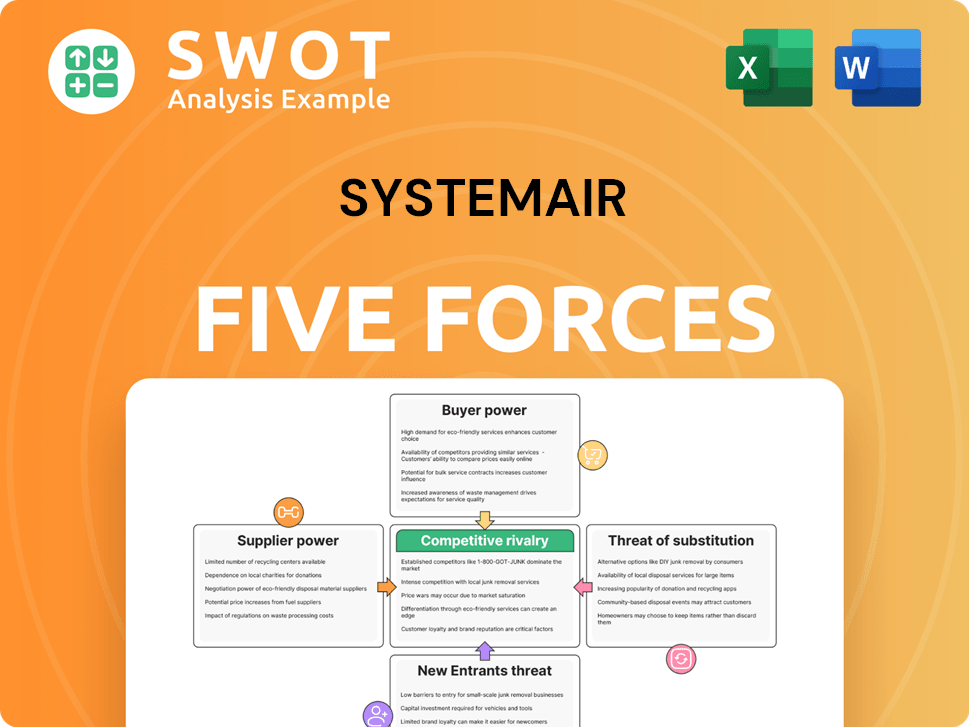
Related Blogs
- What are Mission Vision & Core Values of Systemair Company?
- What is Competitive Landscape of Systemair Company?
- What is Growth Strategy and Future Prospects of Systemair Company?
- How Does Systemair Company Work?
- What is Sales and Marketing Strategy of Systemair Company?
- What is Brief History of Systemair Company?
- What is Customer Demographics and Target Market of Systemair Company?
Disclaimer
All information, articles, and product details provided on this website are for general informational and educational purposes only. We do not claim any ownership over, nor do we intend to infringe upon, any trademarks, copyrights, logos, brand names, or other intellectual property mentioned or depicted on this site. Such intellectual property remains the property of its respective owners, and any references here are made solely for identification or informational purposes, without implying any affiliation, endorsement, or partnership.
We make no representations or warranties, express or implied, regarding the accuracy, completeness, or suitability of any content or products presented. Nothing on this website should be construed as legal, tax, investment, financial, medical, or other professional advice. In addition, no part of this site—including articles or product references—constitutes a solicitation, recommendation, endorsement, advertisement, or offer to buy or sell any securities, franchises, or other financial instruments, particularly in jurisdictions where such activity would be unlawful.
All content is of a general nature and may not address the specific circumstances of any individual or entity. It is not a substitute for professional advice or services. Any actions you take based on the information provided here are strictly at your own risk. You accept full responsibility for any decisions or outcomes arising from your use of this website and agree to release us from any liability in connection with your use of, or reliance upon, the content or products found herein.